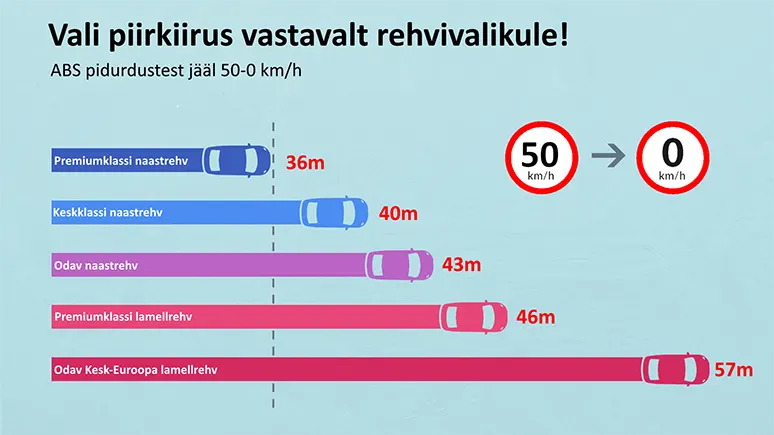What should you know about winter tyres?
Unlike many other countries, normal summer tyres must be replaced with winter tyres for the winter period in Estonia. This means that during the winter months in Estonia it is allowed to drive only with studded or all-season tyres specially designed for winter conditions.
This is, of course, due to our climate, which makes the road conditions extremely dangerous and essentially impossible to drive with summer tyres in winter. Winter tyres ensure that cars and other vehicles on the road maintain their controllability and stability even in snowy and icy conditions that occur in our winter.
Choosing a winter tyre is not always as easy as a summer tyre, because in addition to the quality of the tyre, you also have to take into account your own driving habits and style, and think about whether a studded or all-season tyre better meets your needs.
The winter tyres used in Estonia must certainly meet the winter temperatures here. This means that if Central Europe can handle, for example, all-season tyres tested in Germany or the Netherlands, then Estonian drivers should definitely choose tyres that are specially designed for the conditions of the Nordic countries - the behavior of the tyre in cold temperatures depends on the tyre compound - winter tyres with a much softer rubber compound are suitable for Estonia than for Central and Southern Winter tyres on sale in European countries.
If the minimum tread depth of summer tyres is 1.6 mm according to the law, it is almost twice as much, i.e. 3 mm, for winter tyres. As a rule, the depth of the tread pattern of new winter tyres is at least 8 mm, and you should always check the remaining tread of each tyre critically before changing tyres - at the beginning of the season, there should be at least 5-6 mm of tread left.





